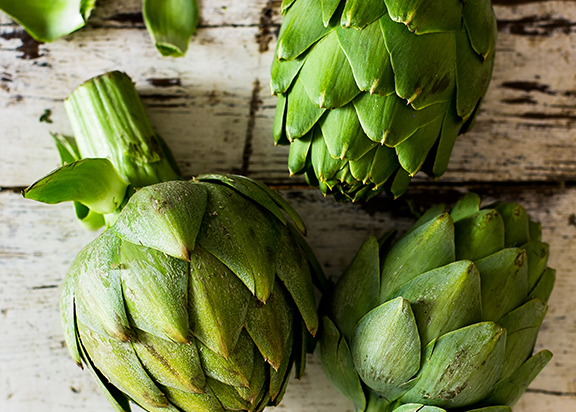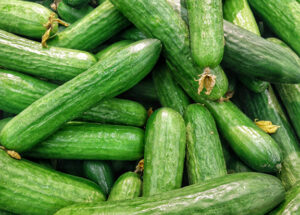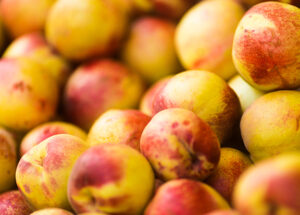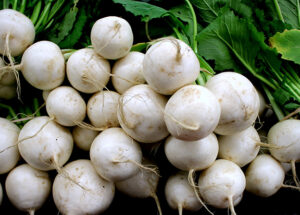What’s in season?

Apples
June, July, August, September, October, November
More than 7,500 varieties are grown around the world, most are still picked by hand.

Artichokes
July, August
Look for a firm bulb with tightly closed bracts (petals). Discoloration on exterior bracts is usually a harmless symptom of frost damage.

Asparagus
April, May, June
This flowering perennial comes in four types: green, white, purple and wild. The first real asparagus harvest comes 3 years after planting.

Green Beans
June, July, August
Green beans grow in the form of a bush that reach 8-20 inches in height or in the form of a 7-10 feet long vine.

Bell Peppers
July, August, September, October, November
Botanically speaking, bell peppers are actually a fruit.

Berries
June, July, August, September
One of the best things about berries is their link to brain health. They reduce inflammation, protect brain cells from free radicals, increase neuroplasticity and much more.

Cabbage
May, June, July, September, October, November
Cabbage contains a high concentration of Vitamin C, especially red cabbage which contains double the content of regular green cabbage.

Carrots
June, July, August, September
Carrots have the ability to improve skin, boost the immune system, improve digestion, detoxify the body, and boost oral health in a variety of ways.

Cauliflower
August, September, October
Cauliflower is technically an edible flower, though the flowers are not allowed to develop and instead they form tight clusters.

Cherries
May, June, July
There are more than 1,000 differnt varieties, around 20 or so altogether are used in commercial production though.

Corn
July, August, September, October
Corn is grown on every continent, except for Antartica, but most of it is produced in the U.S.

Cucumbers
August, September, October
Just one cucumber contains Vitamin B1, B2, B3, B5, B6, Folic Acid, Vitamin C, Calcium, Iron, Magnesium, Phosphorus, Potassium and Zinc.

Garlic
June, July, August, September, October, November
Garlic’s sulfuric compounds are studied for treating the common cold, heart disease and even cancer.

Grapes
July, August, September, October
Keep grapes as dry as possible in the refrigerator, as moisture speeds up decomposition. They will keep for one to two weeks.

Greens
May, October, November
Oranges may be the first thing you reach for when you have a cold due to their vitamin C content. But gram for gram, kale actually has more vitamin C.

Herbs
August, September, October
Herbs are plants with leaves, seeds and flowers that are eaten or used to flavor foods. Some herbs can also be used as medicine.

Leeks
May, June, July, August
Common leeks look like giant scallions and have a mild onion-y, sweet flavor.

Lettuce
April, May, June, August, September, October
Lettuce is the second most popular fresh veggie in the U.S., behind the potato.

Melons
June, July, August, September
Watermelons have remained popular for thousands of years. Pictures of them can even be seen in ancient Egyptian hieroglyphics.

Nectarines
June, July, August, September
Peaches and nectarines are the same species; although peaches have fuzz, it is because the gene is dominant while in nectarines, the ‘fuzz gene’ is recessive.

Okra
June, July, August, September, October
Okra pods should be firm and springy with no mushy, brown or yellowing spots. Cooks agree that the perfect size is 4-5 inches long.

Onions
April, May, June, July, August, September, October, November
Some tips to avoid tears when chopping an onion is to cut under cold running water or splash a little white vinegar on the cutting board before starting.

Peaches
June, July, August, September
Known as “tao,” the peach is the most sacred plant of the Chinese Taoists, and is considered a magic fruit.

Peas
April, May, June, July, August, September, October, November
The less water you use when cooking peas, the less vitamin C is lost.

Plums
June, July, August, September, October
Plums are rich in vitamin C, vitamin K and dietary fibers. The sugar content varies on the variety of plum.

Potatoes
June, July, August, September, October, November
The average American eats 140 pounds of potatoes per year. Germans are among the biggest potato lovers eating more than 200 pounds of potato per year.

Potatoes (Sweet)
August, September, October, November
Avoid storing sweet potatoes in the refrigerator, which will produce a hard center and unpleasant taste. Instead, store in a cool, dry, well-ventilated container.

Pumpkins
August, September, October, November
Native Americans introduced pumpkins to European settlers in the U.S., and the Pilgrims really did serve pumpkin pie at Thanksgiving.

Radishes
May, June, July, August, September
Radishes are so easy and fast to grow, even kids can do it. This is why you will see radishes in many school and community gardens.

Rhubarb
May, June, July, August, September, October
The redder the stalk, the sweeter the flavor. Green rhubarb can also be eaten, and is just a different variety.

Spinach
April, May, June, September, October, November
In the 1930’s U.S. spinach growers credited Popeye with a 33% increase in domestic spinach consumption.

Sprouts (Brussels)
August, September, October, November
They really are named after Brussels, the capital of Belgium, where they were a popular 16th century crop.

Squash
May, June, July, August, September, October, November
Most winter squash have long shelf lives and can last in a cool, dry place for weeks or even months!

Strawberries
May, June
Unlike and other fruit, strawberry seeds are on the outside of the fruit, technically making the strawberry not a berry at all.

Tomatoes
June, July, August, September, October
Tomatoes can be yellow, pink, purple, black and even white.

Turnips
June, July, August, September, October
Sweeter and milder than their larger counterparts, baby turnips are perfect for eating raw, roasting or tossing in salads.

